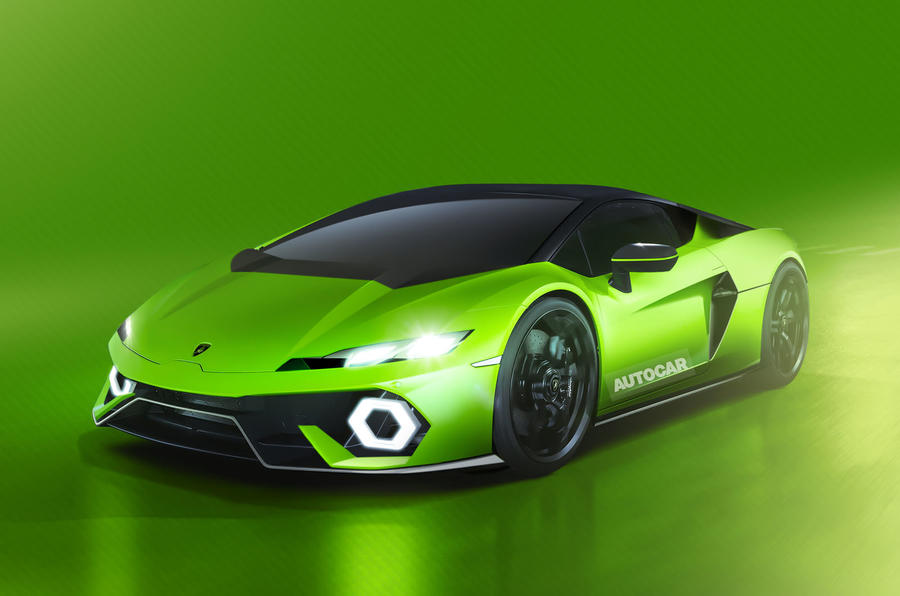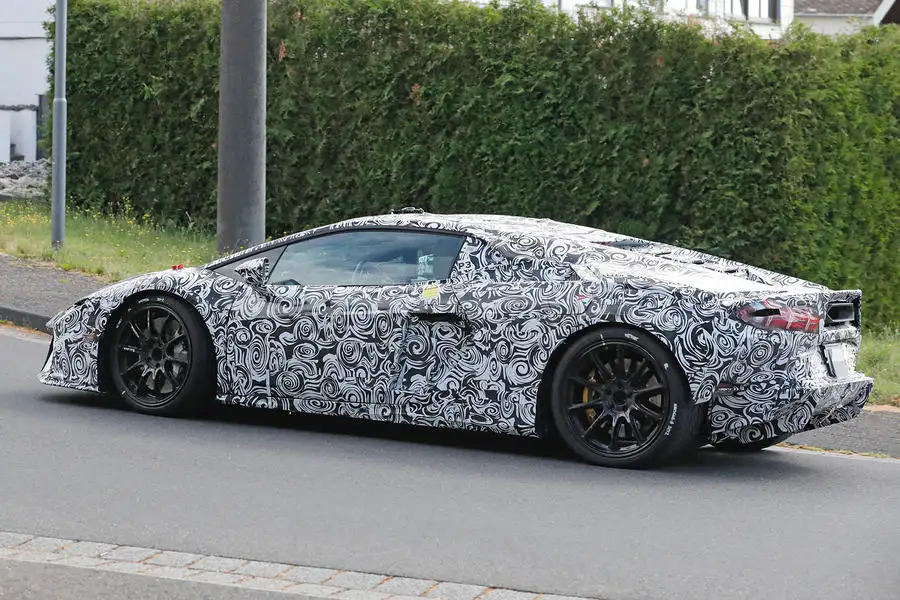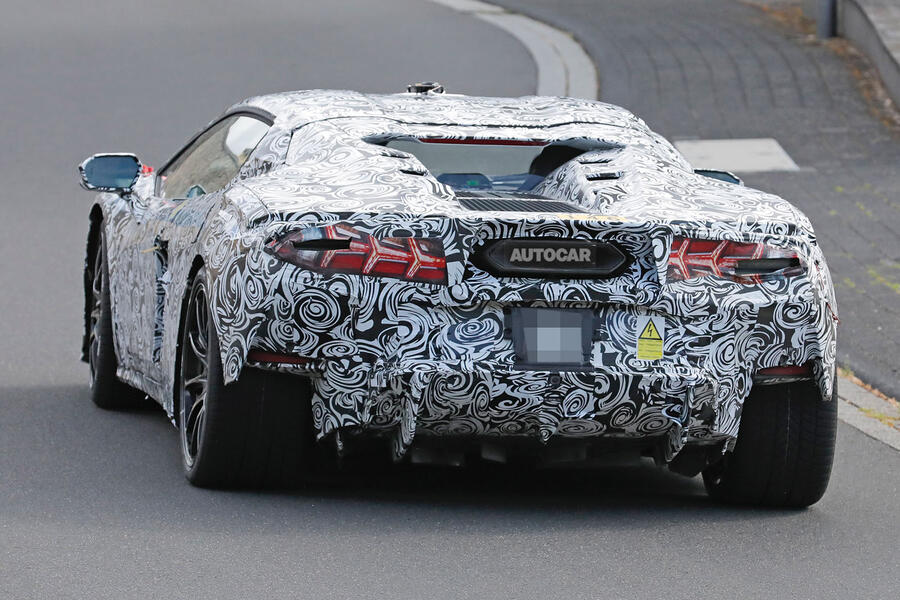The successor to the Lamborghini Huracán will be launched in August, swapping its trademark naturally aspirated V10 for a plug-in hybrid powertrain.
That powertrain will be based around a new V8 that has been engineered in-house, rather than taken wholesale from sibling firm Audi.
When it arrives in August – a date confirmed to Autocar by Lamborghini's head of sales and marketing Federico Foschini – the supercar will complete the Italian firm’s all-electrified model line-up, joining the flagship V12 PHEV Lamborghini Revuelto and just-launched Lamborghini Urus SE.
The move to PHEV for the Huracán successor is because “the package itself it’s much better than a normal ICE car”, Foschini said, adding: “There are characteristics that you cannot achieve if you don't have an electric motor [such as active torque vectoring]; it gives you the opportunity to leverage even more on the potential of the engine.”
Visually, the new supercar will be clearly related to the flagship launched earlier this year. It will have a dramatic silhouette that adheres to head of design Mitja Borkert’s ‘spaceship’ ethos, as well as a raft of cues that have become Lamborghini hallmarks, including a gaping hexagonal exhaust, Y-shaped LED light designs and prominent air channels throughout the body to boost downforce.
The basic principles of the ‘monofuselage’ carbonfibre monocoque introduced with the Revuelto are also expected to be carried over. However, the abundance of expensive composites used in the flagship supercar’s structure are unlikely to be shared by the junior model.
Instead, it’s set to use cheaper aluminium where possible, without incurring a major penalty to rigidity, in line with its more entry-level billing. The rear subframe is already aluminium on the Revuelto, but the front end could follow suit on the junior supercar, for instance.
This philosophy of reserving exotic materials for key structural elements would match that used for the Huracán and Audi R8. They featured a carbonfibre ‘backbone’ – the central tunnel and rear bulkhead – but used mostly aluminium elsewhere.
The platform will also be shortened to visually distinguish the new car from the 4947mm-long Revuelto. For reference, the run-out Huracán Tecnica is 4567mm long.
The move to the monofuselage chassis also enables the electrification of the Huracán successor.
Lamborghini hasn’t yet said whether the junior supercar’s V8 is related to the Urus’s 4.0-litre twin-turbo arrangement. However, given the need to cultivate a highly distinct character and offer a markedly different driving experience, it’s likely that the Huracán successor’s engine will be a highly bespoke proposition, irrespective of its fundamental specification.














Join the debate
Add your comment
RIP this wonderfull V10 !
Another bad day for automotive.
So... it'll be heavier, more expensive and likely won't sound as good as the model it replaces. Hmmm... seems to be what they call "progress" these days...
I've driven the Huracan and i have to it was, for what it is, one of the easiest cars of this type to drive,ok, the ceramic brakes were a bit squeaky but they said that isn't an issue when there up to temp(?) , on the whole if I had the cash to buy and run one I'd do it.